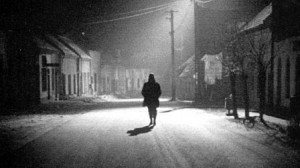Pasolini: Observations on the Long Take
I’ve been thinking about the cinematic long take a lot lately. I’ve always been obsessed with the long take. Among my favorite directors are Tarkovsky, Pasolini, Wong Kar Wai, Tsai Ming-liang. And lately I’ve been watching Bela Tarr on repeat. Like all his films over and over again, because I’m convinced that his use of the long take is accomplishing something very different than these other directors, a sort of reaching of a moment of clarity that results not in understanding but something else. Maybe something like the feeling of intimacy and claustrophobia and fear and relief that comes with giving a confession. Anyways, more thoughts on this coming soon. In the meanwhile, I wanted to post up Pasolini’s great essay on the long take. It framed a lot of thinking about the long take in film, what it means, etc. Sharing the essay with you below…

Werckmeister Harmonies dir. Bela Tarr
***
Observations on the Long Take
By Pier Paolo Pasolini
Translated by Norman MacAfee and Craig Owens
. . . .
Consider the short sixteen-millimeter film of Kennedy’s death. Shot by a spectator in the crowd, it is a long take, the most typical long take imaginable.
The spectator-cameraman did not, in fact, choose his camera angle; he simply filmed from where he happened to be, framing what he, not the lens, saw. [1]
Thus the typical long take is subjective.
In this, the only possible film of Kennedy’s death, all other points of view are missing: that of Kennedy and Jacqueline, that of the assassin himself and his accomplices, that of those with a better vantage point, and that of the police escorts, etc.
Suppose we had footage shot from all those points of view; what would we have? A series of long takes that would reproduce that moment simultaneously from various viewpoints, as it appeared, that is, to a series of subjectivities. Subjectivity is thus the maximum conceivable limit of any audiovisual technique. It is impossible to perceive reality as it happens if not from a single point of view, and this point of view is always that of a perceiving subject. This subject is always incarnate, because even if, in a fiction film, we choose an ideal and therefore abstract and nonnaturalistic point of view, it becomes realistic and ultimately naturalistic as soon as we place a camera and tape recorder there: the result will be seen and heard as if by a flesh-and-blood subject (that is, one with eyes and ears).
